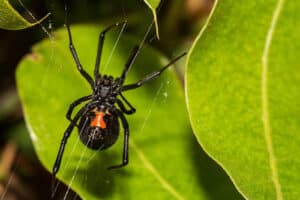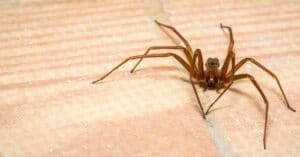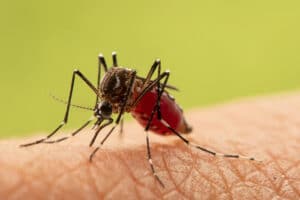July 9, 2022

Snake, Insect and Spider Bites
School is out and summer is in full swing! Anyone who plans to take any trips, camp, spend time in backyards, picnic or go to concerts in the park should be aware of some of the poison hazards outdoors.
Snake Bites
Most of the snakes found in Missouri are harmless and are actually very good for the environment (they keep the rodent population down), but there are five species that are venomous. The copperhead is the most common venomous snake followed by the cottonmouth and three different rattlesnakes.
Symptoms include redness, swelling, bruising, bleeding, or blistering around the bite. Severe pain and tenderness at the site of the bite. Nausea, vomiting, or diarrhea. More serious symptoms can include labored breathing, rapid heart rate, weak pulse, low blood pressure, and muscle swelling.
If you get bit by a copperhead, cottonmouth, or rattlesnake, call the Missouri Poison Center immediately at 1-800-222-1222.
 Black Widow
Black Widow
The female black widow is jet black with a red hourglass-shaped marking on the underside of her abdomen. Black widows live in undisturbed places such as woodpiles, dark corners of barns, garages, houses, under boards, and rocks.
The bite almost always becomes painful within 30 minutes to 2 hours. By 3 to 4 hours there may be muscle twitching near the bite, which can lead to cramping, weakness, and stiffness in the shoulders, back, chest or stomach. Other symptoms may include nausea, vomiting, headache, anxiety, and changes in blood pressure.
If you get bit by a black widow, call the Missouri Poison Center immediately at 1-800-222-1222.
 Brown Recluse
Brown Recluse
This non-aggressive spider hides in undisturbed areas such as closets, corners, woodpiles and under sinks. Bites often occur when the victim puts on clothing in which a spider has been hiding. The color of this spider varies from light tan to brown with a violin-shaped marking on the back of the head-chest area.
Symptoms at the site of the bite may start with pain, redness, swelling, itching and burning. Usually within 1 to 3 days, the bite may look like red rings around a black blister and could take on a “bull’s eye” appearance. It may take up to 14 days to see the full effects of the bite. More serious symptoms like a fever, rash, flu-like symptoms or darkened urine, are less common.
If you get bit by a brown recluse, call the Missouri Poison Center immediately at 1-800-222-1222.
 Insect Bites
Insect Bites
Most often, insect bites appear as red bumps that vary in size and appearance. Our first concern is to avoid an infection. Any time there is a break in the skin, even a small puncture that an insect leaves, are a chance for an infection to occur.
Remember that most infections are caused by actions after the bite, such as scratching and picking at the bite.
- Wash the area with soap and water.
- Apply an antibiotic ointment if the site looks infected.


 Black Widow
Black Widow Brown Recluse
Brown Recluse Insect Bites
Insect Bites